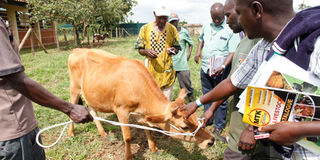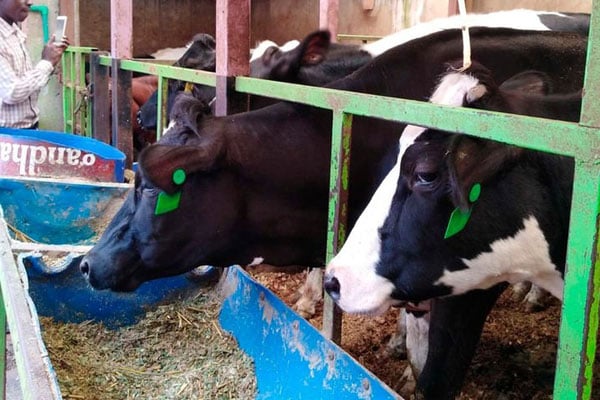Make your cows happy or prepare to be miserable

What you need to know:
All the cattle in the two groups were moderately to severely emaciated and had the copper coloured hair. The animals were also smaller than their expected size at their respective ages.
Njoroge’s farm, about an hour’s drive from my office. As I arrived on the farm a week ago, I noticed how well planned it was, from pasture production areas, the farmer’s house, the workers’ houses and the cattle zero grazing unit.
I quickly credited the farm planner for the placement and design of the dairy unit. The structure was built in the middle of the land assigned to cattle housing but close to the lower boundary of the area.
This meant the unit could be expanded horizontally and vertically without demolishing any of the existing structures.
Njoroge had called me to the farm for the first time to examine his cattle and help him understand why many of them looked unhappy.
“You see doctor, these are good Friesians and they are also making me unhappy because they are not performing as I expect from their good production potential,” he said.
The farmer introduced me to Grace, the farm manager, and we agreed to do a round on the farm starting from the dairy office.
I always like discussing on the go around a farm to get the overall picture of the dairy operation.
It also enables me to do a visual observation and appraisal of all the animals on the farm and form an opinion on the quality of animals and operational management.
In my practice life, I have noticed that farmers will call me to diagnose problems on their farms but often give information with a bias to a diagnosis they already have made.
This may be deliberate in some cases but mostly, it is associated with the unconscious fear of being associated with failure.
As we entered the cow unit, Njoroge asked Grace to give me a running commentary on the animals. He would only interject with additional information.
Eaten very little
The first two unhappy cows were Njeru and Muhiki. They were emaciated with ribs and hip bones very prominent.
The cows were depressed and isolated in the sick pen. I could tell their appetite was way down because their feed troughs were still almost full.
The cows’ ruminal pits, scientifically known as the para lumbar fossa, were well-depressed. The pits are the triangular structures seen in cattle between the last abdominal rib and the protruding hip bone on both sides of the body. Deep depression of the left para lumbar fossa indicated the animals had eaten very little.
Grace said the cows had delivered for the first time about a month before but they had continuously lost weight and drastically reduced milk to five litres per day.
In my assessment, they should have been giving about 20 litres daily but that was impossible in their condition. I made a note to thoroughly examine the cows later. The next lots of unhappy cows were in pens on both sides of the feeding corridor. The cows were good Friesians but their coat colour was mainly copper brown. Two of them had long curly hair in addition to the redness.
“Doctor, I do not understand why black cows turn red and then drop milk production, have erratic heat and keep failing to conceive,” Njoroge interjected.
He said some of the cows had not shown heat for up to six months while others had been inseminated six times without conceiving.
I quickly explained to the farmer and his manager the cows were having nutritional deficiencies especially of minerals and vitamins.
That deficiency needed to be corrected. Copper deficiency for instance was responsible for the brown coat colour. I covered this problem exhaustively on November 4. The third lot of cattle were yearling calves and bulling heifers in two separate pens. These were the most affected. They all generally looked dull and obviously unhappy. The heads appeared oddly shaped as though the cheeks were swollen.
All the cattle in the two groups were moderately to severely emaciated and had the copper coloured hair. The animals were also smaller than their expected size at their respective ages.
Diagnose
In my practice life, I have noticed that farmers will call me to diagnose problems on their farms but often give information with a bias to a diagnosis they already have made.





